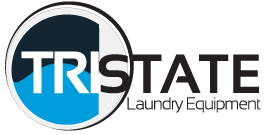It's a natural thing for me to look at the mechanics of equipment or methods of operation and wonder - why or what if? But doing that has caused me to learn lots of things the hard way, which in turn has cost both time and money. That's why I am a firm believer in industry associations.
Currently I am a member of the Coin Laundry Association (CLA), North Carolina Launders & Cleaners Association (NCALC), and Textile Care Allied Trades Association (TCATA). Plus I am a board member on the latter two. I've found that being involved in these groups gives me a sounding board for new ideas. Many times you get great information and insight from the members speaking about their own experiences.
I do need to add a qualifier here -- I'm not suggesting that you run every idea by other members before you make any decision. But being involved gains you access to experts and other folks that have experienced many of the things you may be experiencing. These associations will benefit you professionally -- and personally. Besides great information, I've also made some friends along the way.
Thursday, December 20, 2012
Associations Make An Impact
Saturday, February 25, 2012
Water Heating Options
There is always room to improve efficiencies so I am constantly analyzing equipment and methods. Here’s my latest mission – the hot water heater for 40 to 80 pound washers. And here’s my conclusion – instantaneous gas water heaters work really well provided you have the inside wall space for installation and venting. They are somewhere in the 84 – 94% efficiency range depending on whether they are condensing or non-condensing.
What’s the difference between condensing and non-condensing? A condensing water heater circulates the incoming cold water through an exhaust heated heat exchanger before it goes through the gas fired heat exchanger thus preheating the incoming water and utilizing the exhaust heat. A non-condensing unit does not have the exhaust heat exchanger and simply heats the water as it passes through the gas fired heat exchanger.
There are advantages of using an instantaneous water heater. For instance, not having to maintain a supply of hot water for use and not constantly burning gas to maintain the desired temperature in the storage tank. But there is a disadvantage; there is no head start. That means that your incoming water is at ground water temperature. The temperature does depend on your location. Around here that means around 65 degrees, which leaves a 65 plus degree rise to reach our hot water temperature cycle requirement for most hot wash cycles.
A setup that I’ve really grown fond of is where multiples of instantaneous come in for adequate flow rate. Take this scenario; an Electrolux EXSM665 65lb washing machine has a fill rate of around 16 gallons per minute. A 199,000 BTU heater at a 70 degree rise from ground water temperature is 4.2 gallons per minute. Therefore, we’d need to install three units to supply the 12.6 gallons per minute needed. I like the Rinnai and Noritz brands because they can be controlled to work together as one unit. They can even switch back and forth as to which is the master unit for even unit usage.
Unfortunately, there are still some unknowns. The cost of three 199,000 BTU instantaneous heaters will be less than one 80 gallon 199,000 BTU tank heater; however, the installation of the instantaneous system will be higher because of the three exhaust systems, additional piping, and such. And though the cost to operate this system is considerably lower, I don’t yet have a real life payback in utility savings. I will monitor this and provide more information at a later date. But ultimately, I believe this setup is definitely worth considering.
What’s the difference between condensing and non-condensing? A condensing water heater circulates the incoming cold water through an exhaust heated heat exchanger before it goes through the gas fired heat exchanger thus preheating the incoming water and utilizing the exhaust heat. A non-condensing unit does not have the exhaust heat exchanger and simply heats the water as it passes through the gas fired heat exchanger.
There are advantages of using an instantaneous water heater. For instance, not having to maintain a supply of hot water for use and not constantly burning gas to maintain the desired temperature in the storage tank. But there is a disadvantage; there is no head start. That means that your incoming water is at ground water temperature. The temperature does depend on your location. Around here that means around 65 degrees, which leaves a 65 plus degree rise to reach our hot water temperature cycle requirement for most hot wash cycles.
A setup that I’ve really grown fond of is where multiples of instantaneous come in for adequate flow rate. Take this scenario; an Electrolux EXSM665 65lb washing machine has a fill rate of around 16 gallons per minute. A 199,000 BTU heater at a 70 degree rise from ground water temperature is 4.2 gallons per minute. Therefore, we’d need to install three units to supply the 12.6 gallons per minute needed. I like the Rinnai and Noritz brands because they can be controlled to work together as one unit. They can even switch back and forth as to which is the master unit for even unit usage.
Unfortunately, there are still some unknowns. The cost of three 199,000 BTU instantaneous heaters will be less than one 80 gallon 199,000 BTU tank heater; however, the installation of the instantaneous system will be higher because of the three exhaust systems, additional piping, and such. And though the cost to operate this system is considerably lower, I don’t yet have a real life payback in utility savings. I will monitor this and provide more information at a later date. But ultimately, I believe this setup is definitely worth considering.
Subscribe to:
Posts (Atom)



